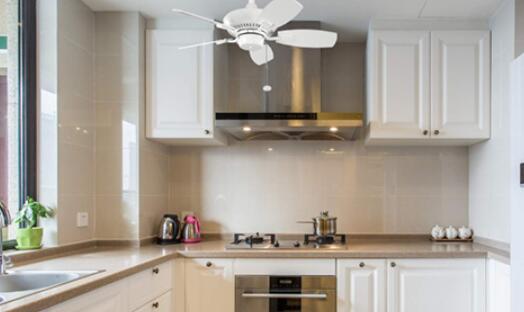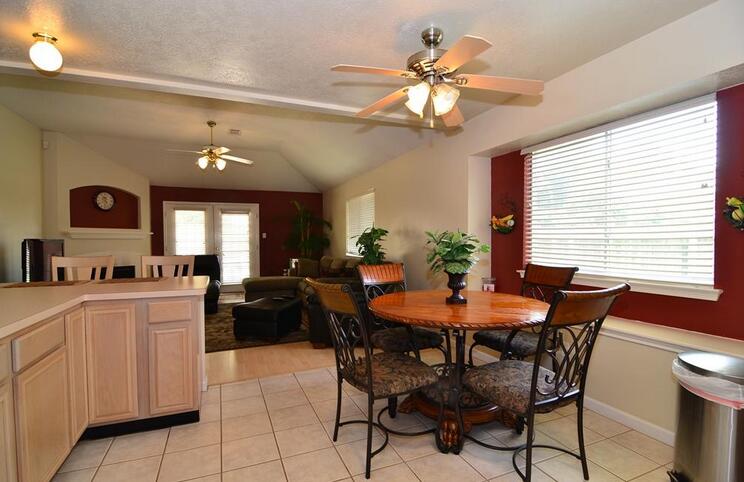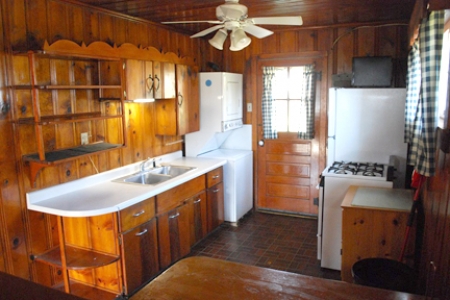The integration of a ceiling fan in a kitchen island is a distinctive and functional design choice that can enhance both aesthetics and comfort in the culinary space. While ceiling fans are traditionally associated with living rooms and bedrooms, their inclusion in the kitchen brings a unique set of benefits. Before deciding to install a ceiling fan above a kitchen island, several considerations should be taken into account to ensure both safety and optimal functionality.
First and foremost, the choice of a kitchen island ceiling fan should align with the overall design and style of the kitchen. Fans come in a variety of designs, from modern and sleek to more traditional and ornate. Selecting a fan that complements the existing decor contributes to a cohesive and visually appealing kitchen environment.
One key consideration is the size of the ceiling fan in relation to the kitchen island. The fan should be proportionate to the island’s dimensions to avoid overpowering the space or appearing disproportionately small. Measuring the square footage of the kitchen and the height of the ceiling can help determine the appropriate fan size for optimal air circulation.
Ceiling height is a critical factor when installing a fan above a kitchen island. Standard ceiling fans require a minimum clearance to ensure safe operation. If the ceiling is particularly low, consider low-profile or hugger fans designed for spaces with limited vertical space to prevent any potential safety hazards.

Additionally, the choice between a flush-mount or downrod installation can impact the overall appearance and efficiency of the kitchen island ceiling fan. A flush-mount installation positions the fan closer to the ceiling, making it ideal for low ceilings, while a downrod provides more flexibility in terms of height adjustment for higher ceilings.
Consider the placement of the kitchen island ceiling fan blades concerning the island’s layout. For optimal air circulation, the blades should be positioned to move air in a downward direction. This helps create a cooling effect and ensures that air is circulated effectively in the kitchen space.
The functionality of a kitchen island ceiling fan extends beyond aesthetics. In a space where cooking activities generate heat, the fan can contribute to better air circulation, dissipating cooking odors and preventing the buildup of heat in the kitchen. This improved air circulation can also be beneficial during warmer months, creating a more comfortable environment.
When selecting a kitchen island ceiling fan, consider models with adjustable speed settings and reversible blade rotation. These features allow for customized airflow, accommodating different seasons and temperature preferences. The ability to reverse the direction of the fan during colder months can help distribute warm air more evenly.

In kitchens with open floor plans, where the island is part of a larger living space, the ceiling fan serves a dual purpose by providing comfort to both the kitchen and adjacent areas. This integration promotes a seamless transition between kitchen and living spaces, creating a cohesive and well-connected home environment.
The installation of a kitchen island ceiling fan involves electrical work. It’s essential to hire a licensed electrician for this task to ensure compliance with electrical codes and safety standards. The electrician will assess the wiring and determine the best location for the fan’s electrical box, ensuring a secure and reliable connection.
Consider the lighting aspect when choosing a kitchen island ceiling fan. Many ceiling fans come equipped with built-in lighting fixtures, providing both ambient illumination and functional lighting for the kitchen island. LED or energy-efficient light kits are popular choices for ceiling fans, offering bright illumination while minimizing energy consumption.
Maintenance of a kitchen island ceiling fan involves regular cleaning to prevent the accumulation of dust and debris on the blades. Cleaning the blades helps maintain optimal airflow and prevents the dispersal of dust particles into the kitchen air. Most ceiling fans have removable blades for easier cleaning.

Ceiling fans often include a reversible motor, allowing for both summer and winter operation. During warmer months, set the fan to rotate counterclockwise to create a cooling breeze. In colder months, set the fan to rotate clockwise on a low speed to circulate warm air without creating a draft.
Consider the noise level of the kitchen island ceiling fan, especially if the kitchen is an open-concept space. Modern ceiling fans often come equipped with quiet and efficient motors to ensure minimal disturbance while providing a comfortable and serene environment.
The inclusion of a kitchen island ceiling fan is a versatile and practical design choice that combines functionality with aesthetic appeal. By carefully considering factors such as size, style, installation method, and additional features, homeowners can choose a ceiling fan that not only enhances the visual appeal of the kitchen but also contributes to a comfortable and well-ventilated culinary space. Always consult with professionals, such as electricians and interior designers, to ensure a safe and effective installation process.

Top 10 Best Ceiling Fan for Kitchen Reviews – Buying Tips

Modern Style Simple Modern Kitchen Ceiling Design – WOWHOMY

Countertops ideas countertops, kitchen remodel, kitchen design

Best Ceiling Fans For Kitchens – Air circulating&lighting&extractor fans

Installing a Ceiling Fan Angie’s List

Kitchen fan Kitchen fan, Ceiling fan, Fan

frou frou maison: November 2024

Image result for angled kitchen island with raised bar Kitchen remodel, Kitchen, Kitchen bar

Related Posts: